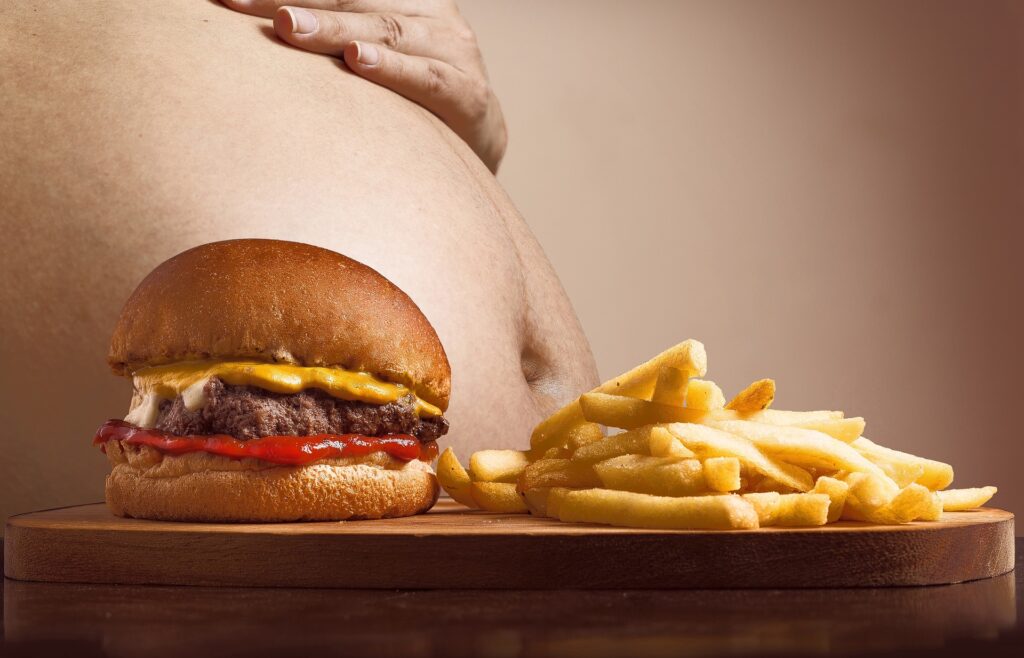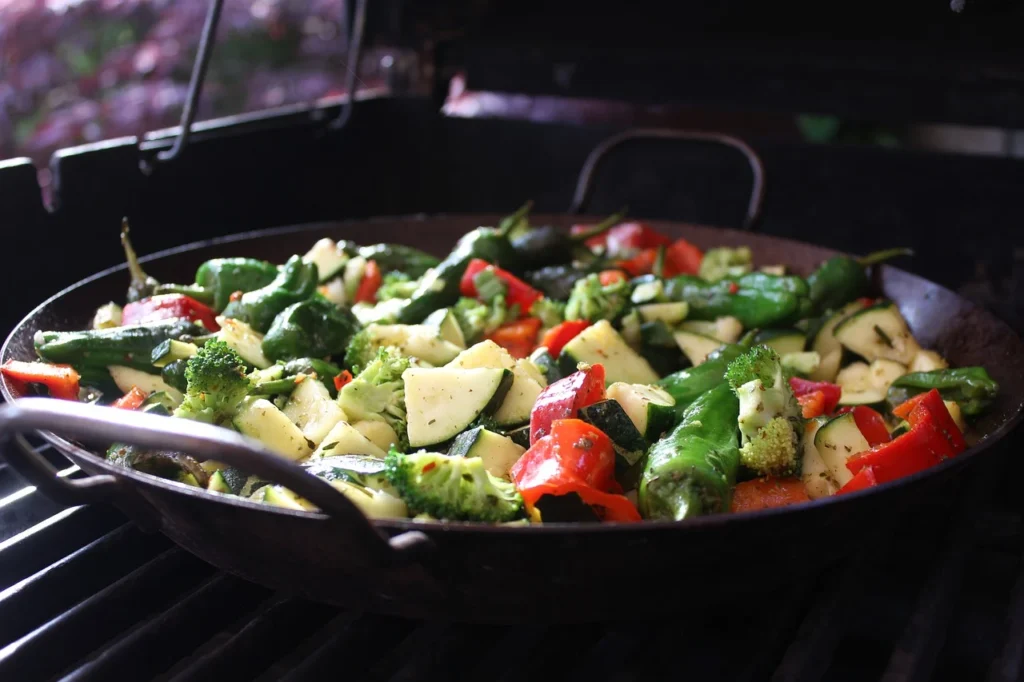Losing weight in 30 days may sound like a daunting challenge, but it’s entirely possible with the right approach. Whether you have an upcoming event, want to jump-start your fitness journey, or simply want to improve your overall health, this guide will show you how to lose weight effectively and sustainably in 30 days. By incorporating a balanced diet, consistent exercise, and positive lifestyle changes, you can achieve noticeable results

In this post, we will cover a 30-day weight loss plan that is not only realistic but also sustainable, so you can continue your journey long after the month is over. Let’s dive in!
1. Setting Realistic Goals for the Next 30 Days
Before you start any weight loss program, it’s essential to set achievable, realistic goals. Expecting rapid weight loss can lead to frustration and disappointment. The key to long-term success is setting manageable expectations.
How Much Weight Can You Lose in 30 Days?
For healthy weight loss, aim to lose 1-2 pounds per week. In 30 days, that could be anywhere from 4 to 8 pounds. While some might lose more, rapid weight loss can sometimes lead to muscle loss and rebound weight gain. By focusing on steady, gradual weight loss, you’ll keep the pounds off in the long run.
Tip: Tracking your progress with a weight loss journal can help you stay motivated. Record your weight, measurements, and how you feel mentally and physically each week.
2. The Importance of Diet in Your Weight Loss Journey
One of the most significant factors in weight loss is diet. Without a balanced nutrition plan, you may find it difficult to lose weight, no matter how much you exercise.
Create a Calorie Deficit
To lose weight, you need to consume fewer calories than you burn, known as a calorie deficit. Calculate your Basal Metabolic Rate (BMR) and adjust your calorie intake accordingly.
For example:
- BMR for Women: 1,800-2,200 calories per day (depending on activity level).
- BMR for Men: 2,200-2,500 calories per day.
To lose weight, aim for a 500-700 calorie deficit per day, which should lead to about 1-2 pounds of weight loss each week.
Focus on Nutrient-Dense Foods
Your diet should be packed with nutrient-dense, whole foods. These foods will nourish your body and keep you feeling full longer, preventing overeating.
- Protein: Helps build muscle and boosts metabolism. Include lean meats, eggs, legumes, and tofu.
- Fiber: Helps with digestion and keeps you full. Include whole grains, vegetables, and fruits.
- Healthy Fats: Vital for heart health and satiety. Incorporate avocados, nuts, olive oil, and fatty fish like salmon.
Sample 7-Day Meal Plan
To help you get started, here’s a nutritious meal plan for the first week of your 30-day journey:
- Day 1:
- Breakfast: Scrambled eggs with spinach, tomatoes, and avocado.
- Lunch: Grilled chicken salad with mixed greens, quinoa, and olive oil dressing.
- Dinner: Baked salmon with sweet potato and steamed broccoli.
- Snack: Greek yogurt with mixed berries.
- Day 2:
- Breakfast: Oatmeal topped with chia seeds, almond butter, and sliced banana.
- Lunch: Turkey and avocado wrap with whole grain tortilla.
- Dinner: Grilled shrimp with brown rice and roasted vegetables.
- Snack: Carrot sticks with hummus.
- Day 3:
- Breakfast: Smoothie made with spinach, almond milk, protein powder, and frozen berries.
- Lunch: Lentil soup with mixed greens salad.
- Dinner: Grilled chicken with quinoa and sautéed spinach.
- Snack: Apple slices with peanut butter.
Continue with similar meals throughout the week to maintain variety and ensure nutrient balance.
3. Incorporating Exercise for Maximum Fat Loss
While diet plays a major role, exercise helps you burn additional calories, tone muscles, and improve overall health. Incorporating both cardio and strength training will optimize your results.
Cardiovascular Exercise
Cardio workouts elevate your heart rate and burn fat. Aim for at least 150 minutes of moderate-intensity cardio per week, such as brisk walking, cycling, or swimming.
- High-Intensity Interval Training (HIIT): Short bursts of intense exercise followed by rest periods are effective for burning fat and boosting metabolism in a short amount of time. Perform HIIT 2-3 times a week.
Strength Training
Strength training is essential for maintaining muscle mass while losing fat. It also increases your metabolism by building muscle, which burns more calories at rest.
- Full-body workouts: Include exercises like squats, lunges, push-ups, and planks. Aim for 2-3 strength sessions each week.
Tip: Rest is crucial for muscle recovery. Alternate between cardio and strength training to give your muscles time to repair.

4. Hydration and Sleep: The Secret Weight Loss Helpers
Often overlooked, hydration and sleep are critical components of any weight loss plan.
Hydration
Drinking enough water is essential for digestion, metabolism, and overall well-being. Aim for at least 8 glasses (2 liters) of water a day. You can also hydrate with herbal teas or water-rich foods like cucumbers and watermelon.
Tip: Drink water before meals to curb hunger and prevent overeating.
Sleep
Adequate sleep (7-9 hours per night) is crucial for weight loss. Poor sleep can disrupt hunger hormones, leading to increased cravings and overeating. Focus on creating a calming bedtime routine and avoid caffeine or screens before bed.

5. Managing Stress and Mental Health During Weight Loss
Weight loss isn’t just physical—it’s mental, too. High stress can lead to emotional eating and hinder your progress. Incorporate stress management techniques such as:
- Mindfulness and meditation: Helps control cravings and manage emotional eating.
- Yoga: Reduces stress and improves flexibility.
- Journaling: Track your emotions and identify triggers for stress eating.
6. Tracking Your Progress and Staying Motivated
Consistency is key in weight loss, and tracking your progress can keep you on track. Use these methods to stay motivated:
- Weigh yourself weekly: Daily fluctuations are normal, but weekly tracking provides a clearer picture of your progress.
- Take progress photos: Sometimes, the scale doesn’t tell the full story. Photos can show changes in body composition.
- Celebrate small victories: Reward yourself for sticking to your plan, but avoid food rewards. Try a new workout gear or a relaxing self-care day instead.

Conclusion: Make It a Lifestyle, Not a Diet
Losing weight in 30 days is achievable, but the key is to make sustainable changes that will last beyond the month. By creating a calorie deficit, eating nutrient-dense foods, exercising regularly, staying hydrated, and managing stress, you’ll be well on your way to achieving your weight loss goals. Keep in mind that consistency and patience are crucial—results will come with time, but they will be more lasting and healthier in the long run. We hope you found this article informative! Feel free to share your thoughts or questions in the comments below : )
